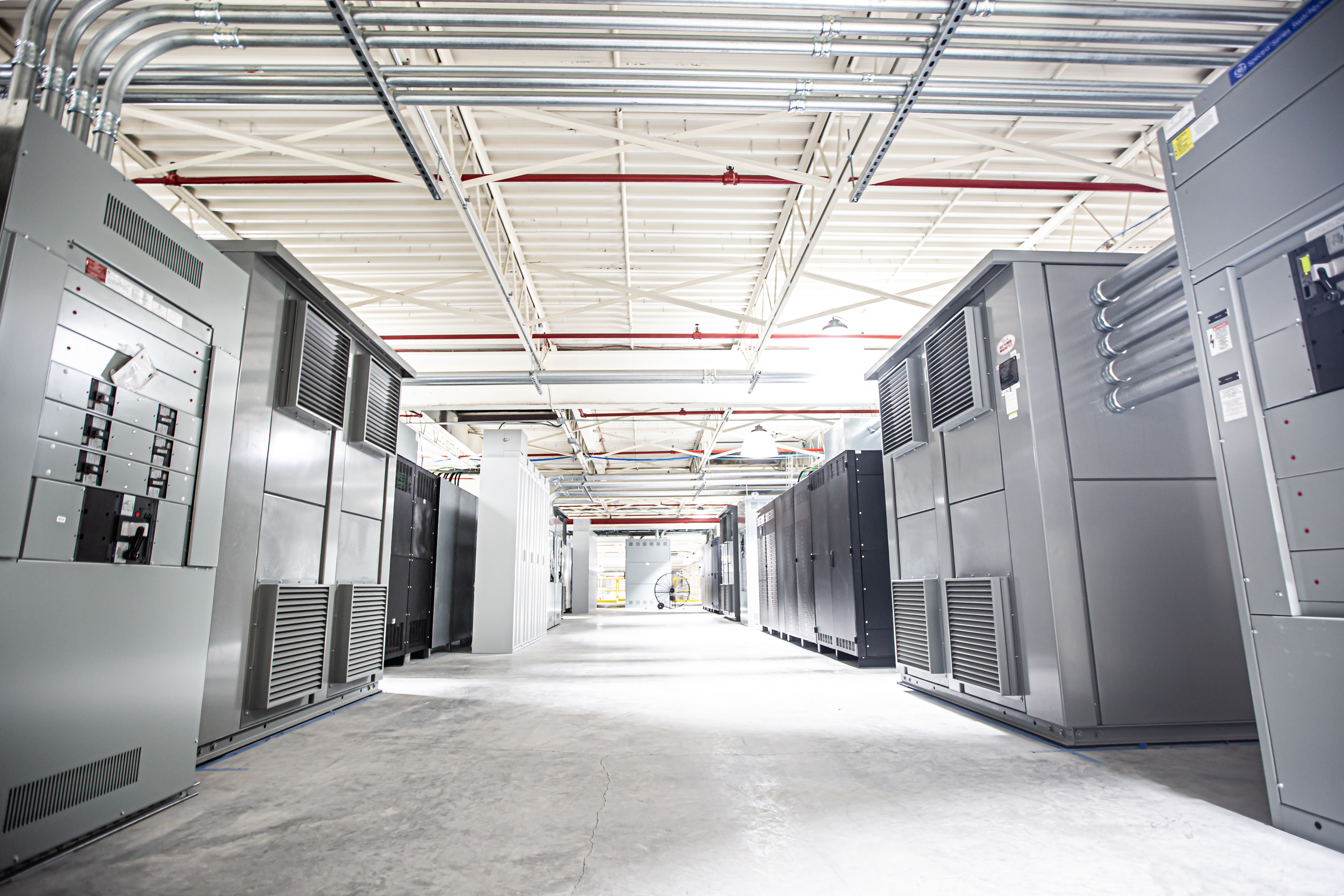

“Pay-as-you-grow” offers potential for colocation data centre operators to grow sustainably and profitably. In this interview, ABB’s global head of data centre technology, Dave Sterlace, explains how to implement the strategy and shares a couple of examples.
What is “pay-as-you-grow”?
Demand for colocation space is growing fast as businesses recognise the benefits of outsourcing data services for better availability and flexibility. The challenge with managing this is how to do it efficiently – and this is what pay-as-you-grow does.
Rather than having to make large up-front investments in a new site, pay-as-you-grow is designed so that new capacity can be installed little and often. This improves affordability as operators can secure tenants earlier and use the income to invest in their next infrastructure build phase.
Pay-as-you-grow uses scalable and modular solutions to provide a consistent, efficient, and cost-efficient way to meet demand.
Data centre designers, operators, and stakeholders can benefit from benefits including faster deployment, improved reliability, reduced capital costs, and higher energy efficiency.
How quickly can new capacity be added?
Data centre operators want to deploy new infrastructure fast. In 2010, two-year build times were typical. However, according to a survey in 2020, 39% of industry professionals expect to see new capacity rolled out in less than a year and 66% in less than 18 months.
One example is US operator GIGA. It delivered the first phase of a new centre in North Carolina in less than six months and with an ultra-low Power Usage Effectiveness (PUE) of 1.15. This is enabling it to save energy and minimise the operating costs of its 60 MW facility.
It called on ABB as a design partner to deliver a packaged power solution. The approach is based on a ‘system plus system’ arrangement and features two types of UPS system to provide flexibility and scalability.
The first supports customer IT loads and is the site’s existing TLE UPS. It is integrated with lithium-ion (Li-ion) batteries, which are lightweight and compact. These are particularly important in this case as the UPS is installed on a mezzanine level that has space and load-carrying limits. The Li-ion batteries also help to reduce energy demand as they can run at higher temperatures, reducing the cooling requirements.
GIGA is its second UPS to support network servers. It is based on the decentralised parallel architecture (DPA) approach. It meets the operator’s requirement for a low-power system and scalable deployment, enabling GIGA to expand its facility in 2 MW blocks.
What challenges are there and how can operators avoid them?
It might sound obvious but if you have a pay-as-you-grow strategy, you need systems that are designed for scalability and flexibility from the start. This will avoid cost and time delays when rolling out future expansions.
One operator that has used this approach is Volico in Florida. It wanted its FLL1 Tier IV colocation data centre to have excellent availability and reliability, as well as providing dedicated server space for customers.
During construction, it found that the original proposed UPS was not scalable and approached ABB for advice.
We suggested switching to a modular DPA UPS with the capability of scaling up in 100 kW increments. This type of UPS can be scaled vertically in increments of 100 kW up to 500 kW in a single frame, and horizontally in up to six parallel frames for a total of 3 MW.
It supports Volico’s ‘six-nines’ principle of 99.9999% availability. It also has the additional benefits of high energy efficiency, and hot-swappability so that maintenance can be performed on a module while the rest of the system is live.
What are the design considerations for pay-as-you-grow?
Four key considerations must be taken into account when planning and implementing a pay as you grow strategy. These are: choice of electrical topology, equipment scalability, digitalisation, and modular deployment.
System topology is the first choice and depends on how much redundancy the operator wants. System plus system topology provides the highest level of redundancy but is the most costly as it uses two independent systems to supply the load. At the other end of the scale, block redundant topology makes the most efficient use of electrical infrastructure as it automatically switches critical loads to a reserve or catcher system if the original supply fails.
Shared redundant topology is a compromise between the two. It uses N+1 UPS systems to share backup capacity across N loads.
Next, it’s essential to specify equipment scalability. For example, by choosing gas-insulated switchgear (GIS), UPS, power distribution units (PDU), and remote power panels (RPP) that are capable of scalability. A modular UPS based on decentralised parallel architecture (DPA) enables scalability while also delivering continuous power availability during maintenance and expansion, and has a lower upfront investment.
Digitalisation – adding intelligence to your electrical equipment – can improve simplicity and enhance scalability as uses a single fiber optic communication bus instead of many point-to-point copper wire connections. The result is that it’s possible to reduce wiring by up to 90%, saving installation time when adding new phases.
Finally, modular systems that are pre-engineered, prefabricated, and pretested packages such as skid units and ehouses can accelerate construction times while reducing risk through consistency.
Ultimately, the technology exists to support pay-as-you-grow for your chosen topology. It’s a matter of specifying equipment that is designed for scalability to support the strategy.

Head office & Accounts:
Suite 14, 6-8 Revenge Road, Lordswood
Kent ME5 8UD
T: +44 (0)1634 673163
F: +44 (0)1634 673173
